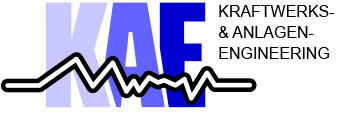Planung & Projektierung
Planung & Projektierung
Fluid- & Thermodynamik
Fluid- & Thermodynamik
Struktur- & Festigkeitsmechanik
Struktur- & Festigkeitsmechanik
Bauwerksstatik & Dynamik
Bauwerksstatik & Dynamik
Planung & Projektierung
Planung & Projektierung
ErdbebenertüchtigungFluid- & Thermodynamik
Fluid- & Thermodynamik
Struktur- & Festigkeitsmechanik
Struktur- & Festigkeitsmechanik
Bauwerksstatik & Dynamik
Bauwerksstatik & Dynamik
KAE ENGINEERING.
Interdisziplinäre Erfahrungen..
Unsere Branchenerfahrungen sind vielfältig und langjährig.
Profitieren Sie davon.
KAE ENGINEERING-LÖSUNGEN.
EUROPAWEIT IM EINSATZ.
Gemacht in Deutschland. Von weltweit anerkannten Experten für Kraftwerk,- & Anlagenengineering.

Fragen Sie doch unsere Kunden,
warum Sie zufrieden sind.
Optimales Engineering für den sicheren Workflow.
Nukleares Zwischenkühlsystem TF
- Druckaufbau im Rohrleitungssystem durch Heizrohrbruch in diversen HD-Kühlern
Frischdampfsystem RA
- Belastung der Frischdampfleitung bei Überspeisung der Dampferzeuger nach einem Heizrohrbruch
Speisewassersystem RL
- Optimierung der Rückschlagventile
- Ermüdungsanalyse des RL-Stutzens am Dampferzeuger
Druckhaltesystem YP
- Austausch der Druckhalterabblaseventile
- Berücksichtigung des Lastfalls
Druckhaltesystem YP
- Austausch der Druckhalterabblaseventile
- Berücksichtigung des Lastfalls „Bleed and Feed“
- Austausch der Sprühventile

Speisewassersystem RL
- Optimierung der Freilaufrückschlagventile nach den Pumpen
Frischdampfleitung RA
- Materialaustausch der Rohrleitung
- Sanierung der Halterungen
- Aktualisierung von Komponentennachweisen
Speisewassersystem RL
- Optimierung der Rückschlagventile






